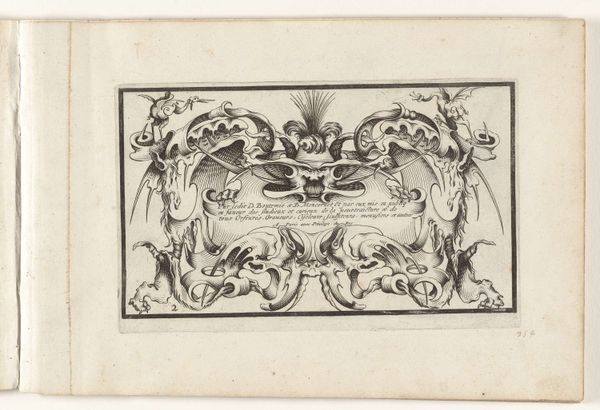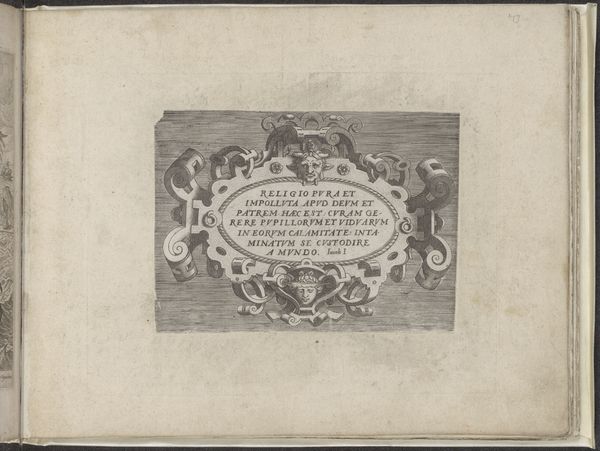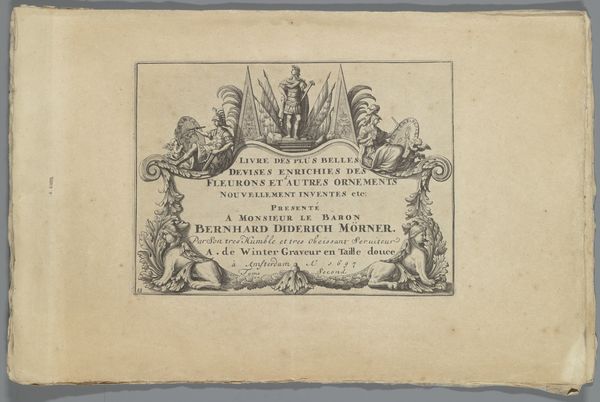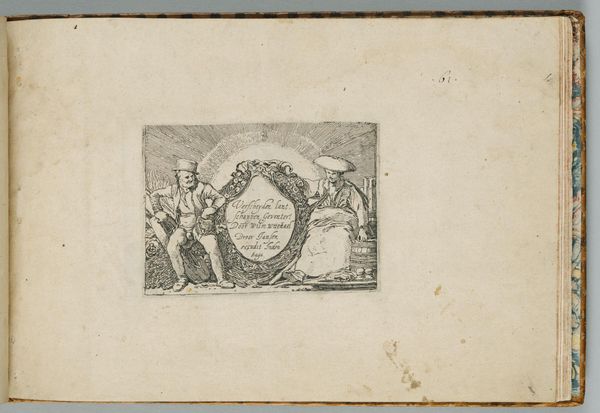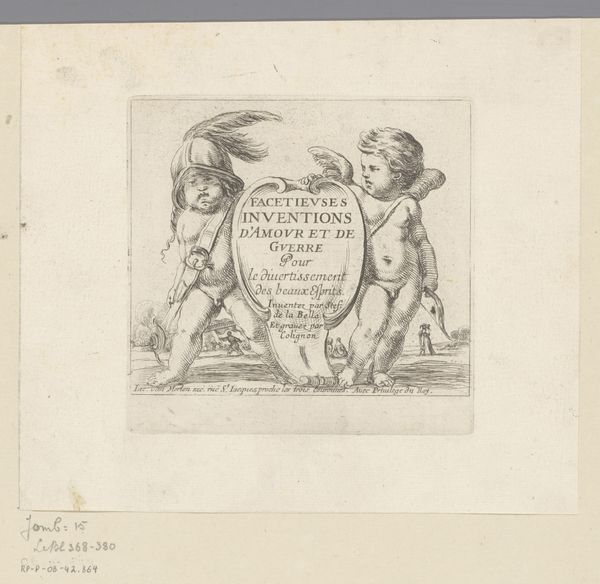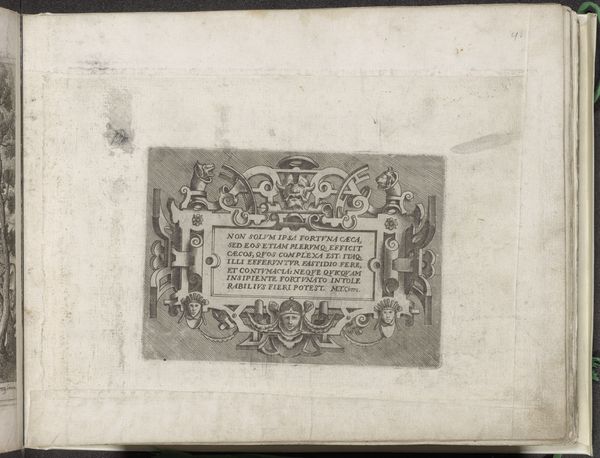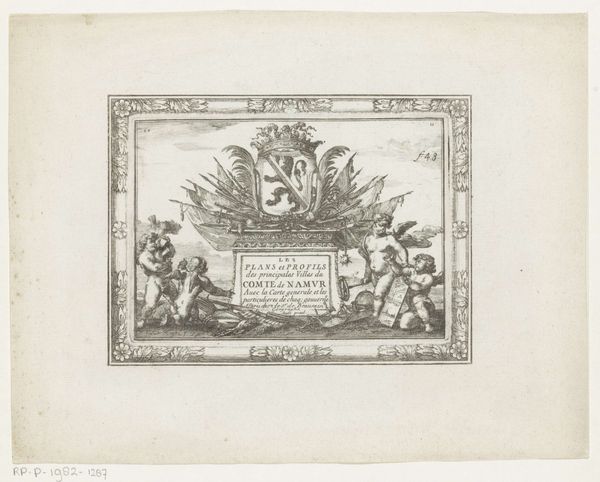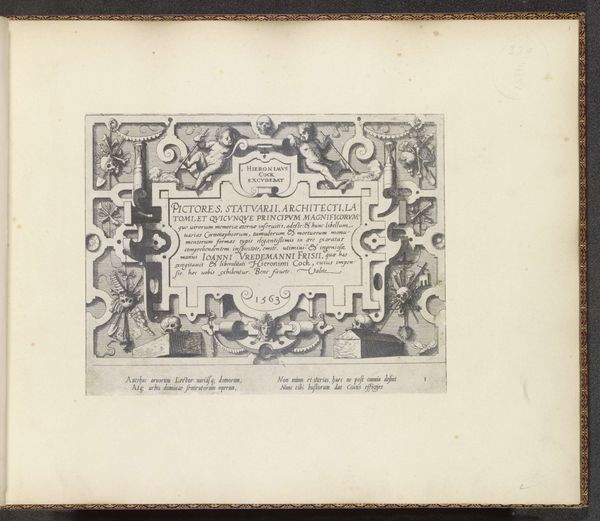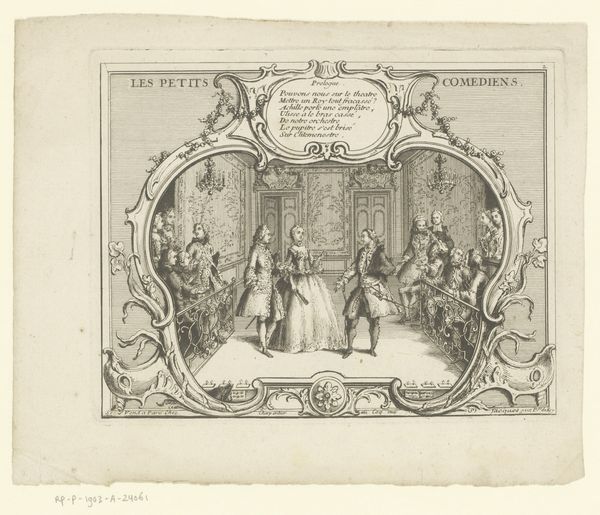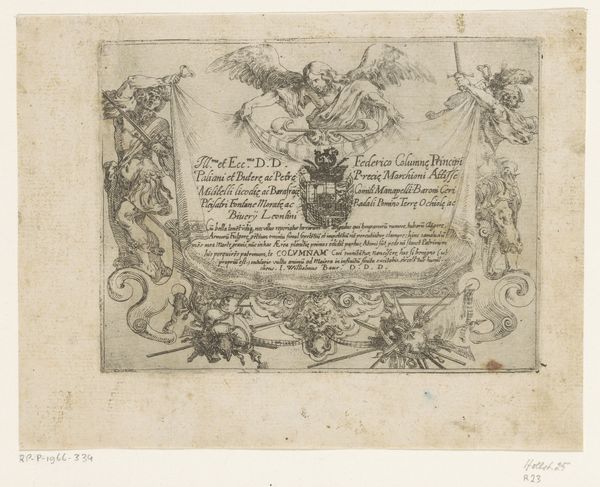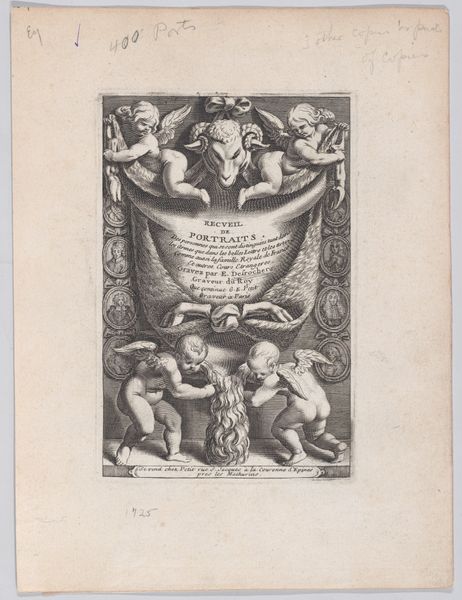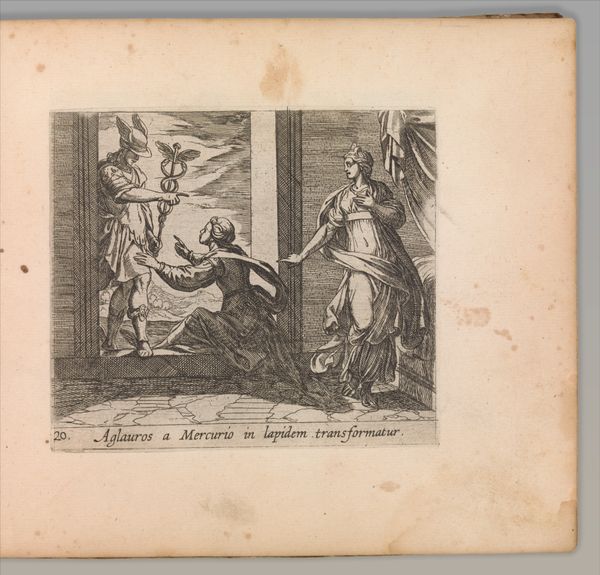
Album met een titelprent en een serie van negentien ornamentprenten met ontwerpen voor hoofddeksels 1636
0:00
0:00
drawing, ornament, print, paper, ink, engraving
#
drawing
#
ornament
#
baroque
# print
#
pen sketch
#
paper
#
ink
#
pen-ink sketch
#
history-painting
#
engraving
Dimensions: height 130 mm, width 210 mm
Copyright: Rijks Museum: Open Domain
Editor: Here we have “Album met een titelprent en een serie van negentien ornamentprenten met ontwerpen voor hoofddeksels,” or “Album with a title page and a series of nineteen ornamental prints with designs for headdresses,” by Denis Boutemie, dated 1636. It's a series of engravings and ink drawings on paper, and I’m immediately drawn to the incredibly intricate linework. What do you make of this work, given the material choices? Curator: As a materialist, I find the use of printmaking in disseminating these designs particularly interesting. Consider the labor involved: Boutemie, the "Orfeure ordinaire du Roy," designs these elaborate headpieces, and then this design is meticulously transferred onto a printing plate, allowing for mass production and widespread consumption of his ideas. This challenges the very notion of the artist as a solitary genius. What kind of social impact might a series of prints like this have at the time? Editor: I suppose it made fashion accessible beyond the direct patronage of the court. Before mass media, this was a way to dictate and distribute trends, a kind of early fashion magazine. How would that affect the status of craftspeople replicating those designs in real materials, versus the designer himself? Curator: Precisely! We have the original designs created by an artist employed by the King of France, intended for head ornaments, then replicated through engraving; finally the resulting prints acted as guides for artisans producing the ornaments. This establishes a complex hierarchy. The means of production, through repeatable methods, created value in craft that spread far from its initial patronage. It would enable others’ creative agency by establishing templates from which further artworks could deviate. Does this hierarchical perspective on production change how you view the initial designs? Editor: It adds another layer. These weren't just sketches, they were blueprints for a whole industry, dictating labor. Thinking about it in those terms emphasizes the real work and materiality needed to bring those forms into existence. Curator: Exactly. Analyzing the modes of reproduction and reception illuminates the social and economic structures embedded within even seemingly decorative arts. Thank you, that shift is crucial to appreciate the power of material investigation.
Comments
No comments
Be the first to comment and join the conversation on the ultimate creative platform.
